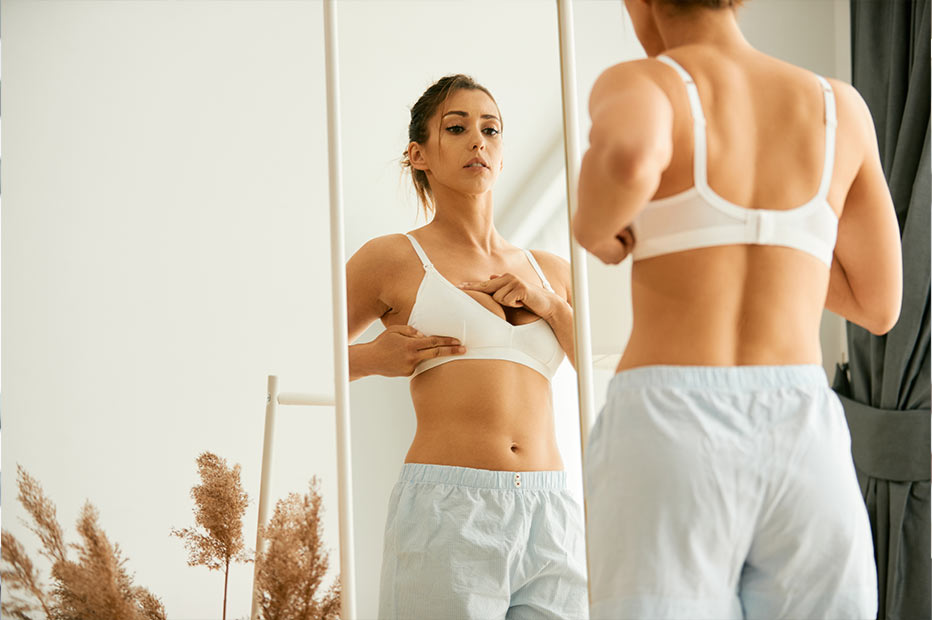How To: Breast Self-Exam

Why are breast self-exams important?
Knowing how your breasts look and feel can help you notice any changes over time. By doing monthly self-exams, you can see if there are any changes. Most changes found during a self-exam are nothing serious. However, some changes may be serious. Finding a change in your breasts and telling your doctor could help you find breast cancer early.
What is breast cancer?
Breast cancer is a disease that forms in the cells of the breast. There are many kinds of breast cancer. It can occur in women and men, although it is rare in men.
When should I check my breasts?
You should check your breasts on the same day every month. If you have a period, you should check your breasts the week after your period ends.
Where should I check my breasts?
You can check your breasts standing up in front of a mirror, lying down, or even in the shower. Pick whatever is easiest and most comfortable for you.
What should I do?
- Start with your arms at your side. Look for puckering, dimpling, skin changes, or changes in size, shape, or symmetry. Check your nipples for positioning, color, and if anything is coming out of them.
- Repeat Step 1 with your hands on your hips.
- Repeat Step 1 with your arms over your head and the palms of your hands pressed together.
- Use your three middle fingers and apply different pressure levels to feel all the breast tissue. Use a circular motion when checking your breasts, starting at the nipple and moving outwards.
- Follow a pattern to make sure you check your entire breast.
A few tips:
- Take your time. It may take several minutes to check each breast.
- Remember, you want to check your armpit too.
- If you are doing your exam in the shower, put soap on your hands so your fingers can move over your skin easily. If you are standing or lying down, you can use lotion.
What am I looking and feeling for?
During your exam, pay attention for:
- Hard lumps
- A change in your nipple positioning
- Anything coming out of your nipple, like puss or blood
- Changes to skin color or texture
- Swelling
- Pain
- Itching, sores, or rashes
I noticed a change. What should I do?
If you notice changes or have concerns, contact your doctor. Your doctor may suggest more tests, like mammograms and ultrasounds, to better understand the change and determine what to do next.
Sources:
https://www.cdc.gov/breast-cancer/screening/index.html
https://www.mayoclinic.org/tests-procedures/breast-exam/about/pac-20393237
